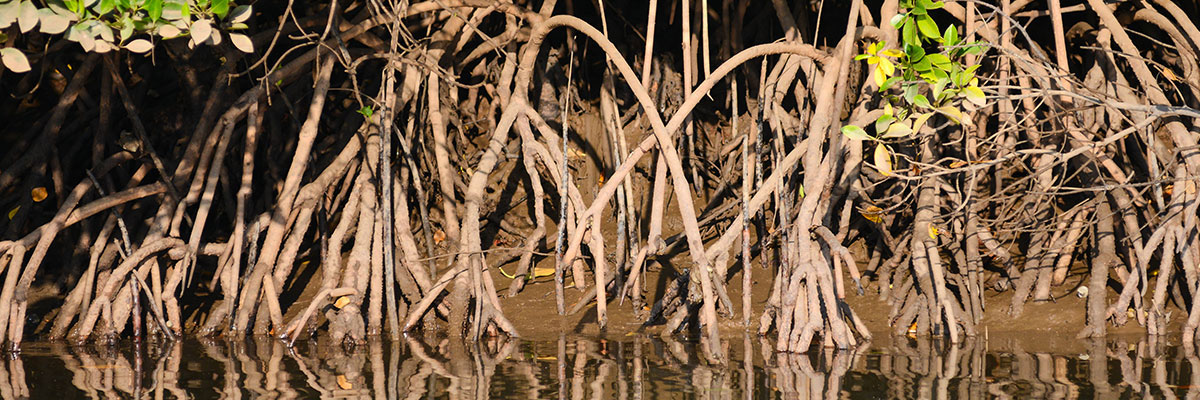Exploring the Key’s Mangroves

Mangrove Hammocks are natural clusters of Mangrove trees that are found along the boundaries of the Key’s waterways. Specifically, Mangrove Hammocks are located primarily on the Biscayne Bay side of Key Biscayne, for instance close to the Crandon Park Marina.
A Mangrove Hammock was planted at the Bill Baggs entrance to Pines Canal after Hurricane Andrew. The Hammock was planted to ensure that trees native to South Florida replace non-native trees such as the Australian Pines found in the area prior to the storm.
Mangrove Hammocks provide natural protection to areas inshore of the hammocks from high winds as well as safe harbors when they partially surround inlets. They are a critical ingredient in the ecology of the Key as well as providing many recreational opportunities.
Ecologically, they act as habitats for many of the birds that reside on the Key either temporarily or permanently. They also serve as breeding grounds and residences for many kinds of fish that inhabit the Bay. Many of these fish are popular catches for recreational fisherman.
Recreationally, areas close to the mangroves also provide safe areas for kyaking, canoeing and small sail boats (i.e., they are not suitable for large boats). The Mangrove Hammocks are susceptible to natural and man-made dangers. High winds are obvious threats to the trees.
Flooding by salt water can also damage the trees as exemplified by the storm surge effects of Hurricane Andrew on the Mangrove Hammocks of Biscayne Bay.
Relative Environmental Questions
These Relevant Environmental Questions promote environmental awareness and serve as a starting point for citizens to begin making environmental observations. Citizens will soon be able to submit their environmental findings and answers to these questions with the launch of the Record page. Please be sure to follow our Facebook page for the latest news and updates!
- Have you noticed any areas with signs of human disturbance (e.g., damaged or removed mangroves, litter or marine debris)? If so, where?
- Have you noticed any new trails being made by human traffic? If so, where?
- Have you seen any non-native plants (e.g., Brazilian pepper tree)? If so, where?
- Have you noticed any changes in the insect community (e.g., mosquito abundance)?
- Have you seen any non-native animals such as iguanas? If so, where?
- When fishing in and around mangrove forests (either by boat or by foot) on Key Biscayne or Virginia Key, have you noticed any changes in catch size, species or frequency?
- Have you noticed a change in the canopy height (i.e., have the trees gotten taller or shorter as a whole)? If so, where?
- Have you noticed any changes in marine bird abundance? If so, describe.
More Relative Environmental Questions
Lists of Relevant Environmental Questions (REQs) can be found in each of the Explore sections of the Citizen Scientist Project’s Lab. Before going out to explore the environment in or around Key Biscayne, Virginia Key, or Hobie Island, you can review the REQs to have a better idea of what to look for during your exploring.
Once your exploration is complete, and you are ready to answer the REQs, just jump over to the Record section of the Citizen Scientist Project’s Lab to submit your answers.

